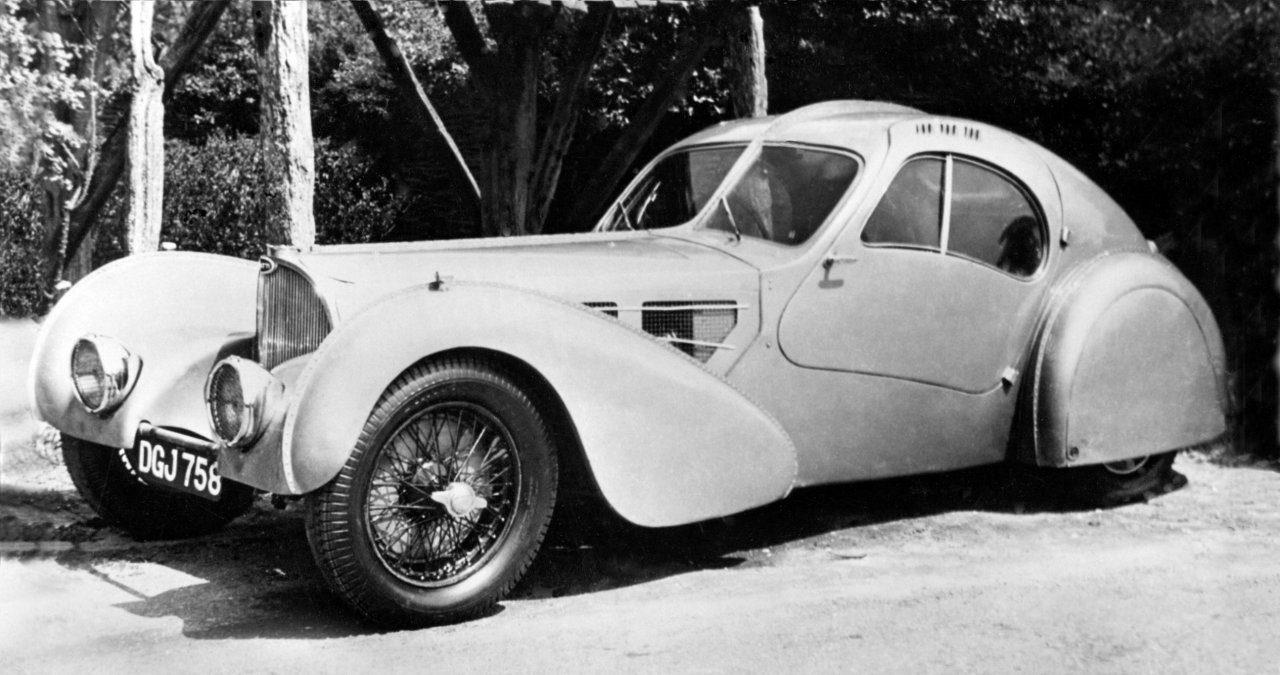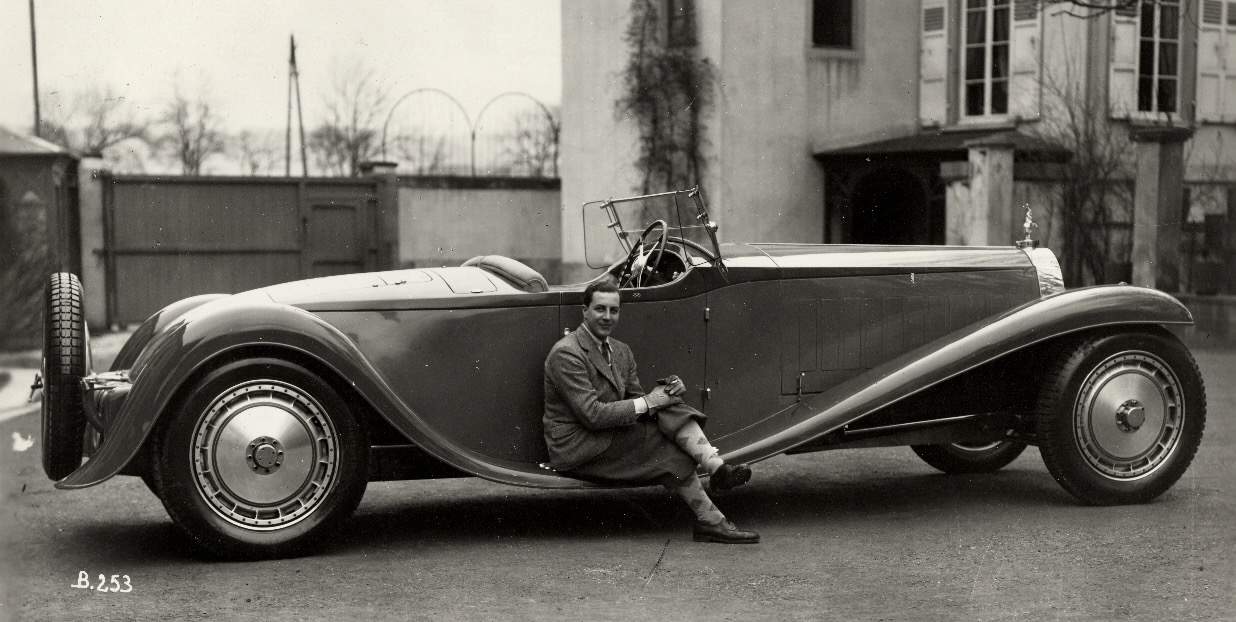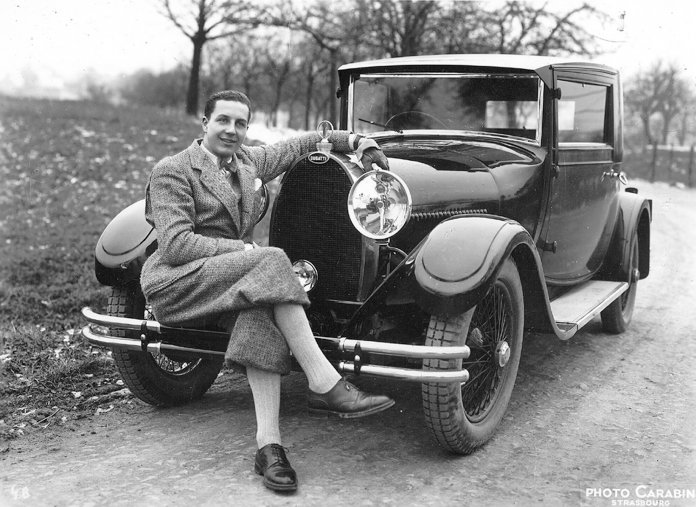(Editor’s note: With January 15 being the 113th anniversary of the birth of Ettore Bugatti’s son, Jean, we’ll use the occasion as an excuse to share Bugatti’s announcement and period photos of cars the younger Bugatti created before his death while testing one of those vehicles.)

An unmistakable silhouette blended with pure elegance. The Bugatti Type 57 SC Atlantic was created in 1936, which over many decades, has become one of the most iconic automobiles ever made. Its creator was Jean Bugatti, the oldest son of Bugatti founder Ettore.
Jean Bugatti was born on January 15, 1909, in Cologne, Germany. His full name, Gianoberto Carlo Rembrandt Ettore Bugatti, is in honor of his father Ettore’s Italian roots, from which he later derived his French moniker, Jean. Ettore, at the time of Jean’s birth, was employed as head of the production department of the gas engine company Deutz AG in Cologne.
Jean’s passion for cars emerged during his childhood. When Ettore first opened his manufacturing plant in Molsheim in January 1910, Jean spent most of his time in the workshop and production facilities of the young and creative company. As a teenager, his talent flourished from the craftmanship and skill he learnt in Molsheim.

From the late-1920s onward, the combined expertise of Jean and Ettore Bugatti established the company as one of the most famous names in the automotive industry. Then, in 1936, at the young age of 27, Jean was handed the keys to his father’s company, ready to lead Bugatti into a prosperous future.
In addition to cutting-edge automotive technologies, Jean’s passion was the design of vehicles. With an extraordinary eye for form and aesthetics, he created timeless automotive shapes that would influence the industry for decades to come.
At the age of just 21, he designed the first vehicles for Bugatti. In 1926, Ettore Bugatti presented the Type 41 Royale, the most powerful, largest and most luxurious automobile in the world, characterized by incomparable power and an opulent interior.
Two years later, Jean Bugatti designed the six-meter-long Type 41 Royal Roadster Esders. The two-seater convertible for textile manufacturer Armand Esders still impresses today with its unique elegance. Since Armand Esders wanted to drive his vehicle exclusively during the day, both headlights were dispensed on the Roadster — a clear contribution to greater elegance. Versions of the Type 46, Type 55 and Aerolithe vehicles also came from Jean Bugatti’s masterful pen strokes.

Jean Bugatti’s most famous creation was the Type 57 SC Atlantic in 1936, a coupe with flowing forms and a unique riveted fin, sitting almost flush to the road beneath it. The supercar embodies the manifesto of Bugatti’s three pillars — speed, luxury and elegance – with a particular focus on aesthetics.
Today, the model is considered one of the world’s most exclusive and valuable sport coupes. Only four Atlantics were built, and only two are preserved in their original condition to this day.
The second of the four Atlantics built was for Jean himself, which famously went down in automotive history as “La Voiture Noire.” This mythical automobile has been untraced since 1938, presumed lost during the Second World War. Its disappearance remains one of the great mysteries of the automotive world.
Jean Bugatti sadly died on August 11, 1939, at the age of 30, in a car accident in Duppigheim, not far from the Bugatti factory. During a test drive, he had to swerve to avoid a collision with a cyclist and was fatally injured in the accident.
A small monument was erected in his honor at the site of the accident. Nearby, in the Château St. Jean and on the Bugatti grounds in Molsheim, the legacy of Jean and his father Ettore lives on to this day.





